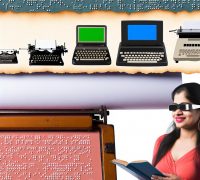Understanding Braille Across Various Languages
Braille, a tactile writing system, provides a unique avenue for individuals who are visually impaired to both read and write through the elementary sense of touch. Credited to Louis Braille, this revolutionary system was developed in the early 19th century. It has since expanded, encompassing numerous languages across the globe, adapting itself to suit a variety of linguistic structures and systems. The versatility and adaptability of Braille are why it is so fascinating; it not only ensures accessibility but also respects individual linguistic idiosyncrasies. Thus, this article serves to explore how Braille has developed across various languages, highlighting both its flexibility and its adherence to linguistic particularities.
Basic Structure
The core component of Braille is the cell, which consists of six raised dots organized into a matrix of two columns and three rows. This configuration allows for 64 possible dot combinations, including the ‘no dot’ combination, which is a blank or space. Each arrangement of dots can symbolize various elements: a letter, a number, a punctuation mark, or even an entire word, depending on the specific Braille variant being utilized. Although Braille globally follows this primary structure, the detailed representation of characters changes significantly as the Braille system is adapted to complement the distinct phonetic and alphabetic systems present in different languages.
Adapting to Alphabetic Languages
The adaptation of Braille to alphabetic languages often involves a direct correspondence with the existing written alphabet. For languages such as English, French, and Spanish, Braille’s correlation with the Latin alphabet is apparent; however, each language requires unique adaptations to address characters and accents that are not part of the basic Latin alphabet. In the case of French Braille, additional Braille cells are utilized to indicate accented letters, including é, è, and ê, ensuring these essential nuances are maintained. Similarly, Spanish Braille incorporates unique letters like “ñ” into its encoding system to reflect the distinct pronunciation in the language accurately.
Non-Alphabetic Languages
The adaptation of Braille in non-alphabetic languages presents a more intricate challenge. In the instance of languages like Chinese and Japanese, the Braille system must adjust to reflect their unique linguistic frameworks. Chinese Braille has been developed using a syllabic system as opposed to an alphabetical one. This method represents sounds rather than the individual characters typically used in written Chinese. This phonetic approach allows Braille readers to reconstruct words by associating the sounds with Braille symbols, enabling effective communication. Conversely, Japanese Braille incorporates a mix of kana syllabary and kanji elements. Despite the inherent complexity of the written Japanese language, Japanese Braille simplifies this by directly translating syllabic sounds, ensuring the readability remains straightforward for users.
Unique Linguistic Features
Beyond basic alphabetic and non-alphabetic adaptations, some languages likewise require specialized modifications in their Braille systems due to distinct phonetic structures and grammatical features. Arabic Braille is one such example, mirroring the print direction of written Arabic by reading from right to left rather than the conventional left to right. This customization is essential to preserve sentence coherence and the linguistic integrity of Arabic when it is being read through tactile means, ensuring that the language’s particularities are respected and clearly communicated through Braille.
Challenges in Standardization
Even though Braille itself is an instrumental tool for communication and literacy, the pursuit of a standard application of it across numerous languages poses significant challenges. This is especially notable in regions with high linguistic diversity and presence of multilingual speakers. Different countries might adopt or adapt their variations to meet the demands of local dialects or address specific linguistic features. This is particularly evident in India, where the myriad languages such as Hindi and Tamil each possess their own set of Braille codes. Active initiatives continue seeking to harmonize Braille usage worldwide, all while ensuring that respect for linguistic diversity is maintained. These collaborative efforts aim to foster global Braille literacy, encouraging universal access to information.
Resources for Learning
To aid in the widespread literacy and proficiency in Braille, a wealth of resources and institutions globally provide educational materials and training in Braille across its various forms. These resources have been instrumental in disseminating knowledge and skills, enabling people to learn Braille efficiently in multiple languages. For individuals interested in delving deeper into how Braille adapts to different languages, or to embark on learning Braille themselves, there are comprehensive guides and materials available which cater to various linguistic backgrounds.Explore more here for guides tailored to specific languages.
Conclusion
In conclusion, Braille stands as a pivotal element in promoting literacy and facilitating communication for individuals who are visually impaired, showcasing its capability to transcend linguistic boundaries. By offering a tactile representation of the world’s diverse languages, Braille ensures that these individuals can access and engage with a multitude of texts. As technological advancements continue to evolve, so does the potential for Braille’s reach and efficacy. Such development promises a progressively more accessible world, where Braille literacy equips individuals to interact with language and information on their terms. The exploration of Braille’s adaptability to different languages underscores not only its importance but also the rich linguistic diversity it embraces, advocating for inclusivity and equal access to information through tactile means.



